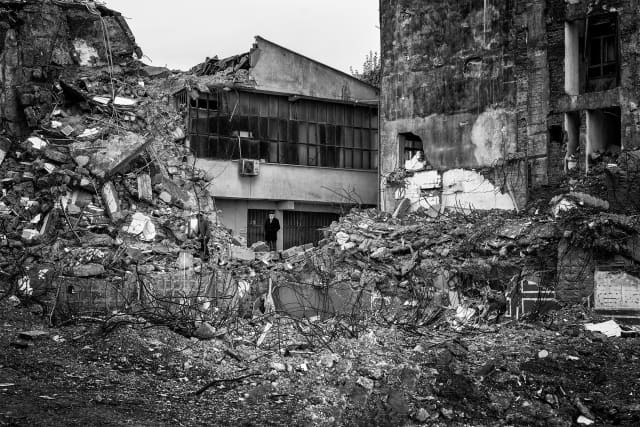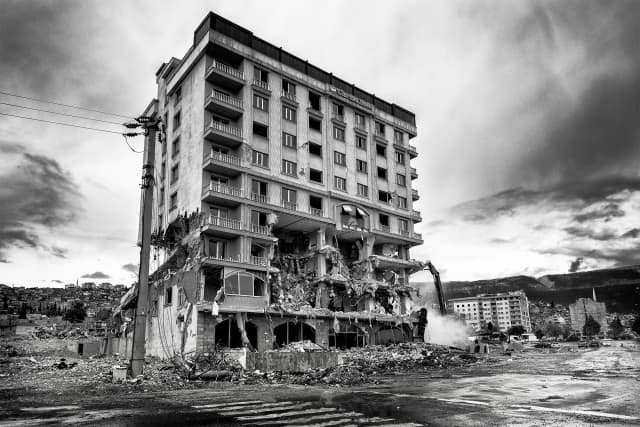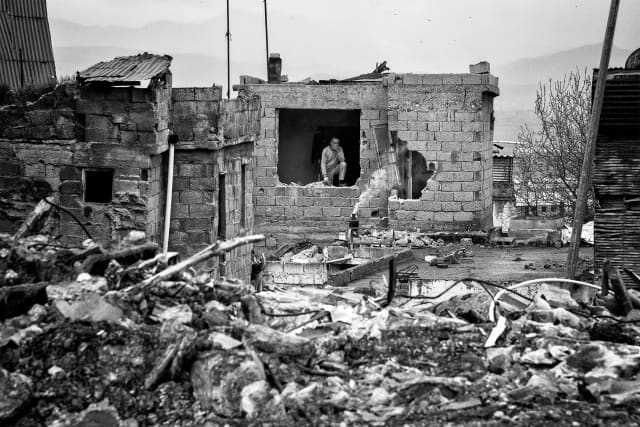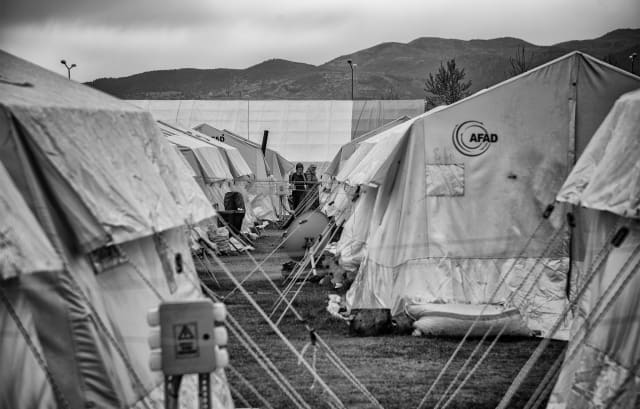It is impossible to answer these questions; it is utopian to want to explain the inexplicable, because in this story there is neither beginning nor end, everything is intertwined literally and figuratively when you put your feet amidst the rubble of the earthquake that struck on 6th February.
When the ground gave way and when I discovered the first images on TV screens, I immediately became aware that something terrible had just taken place in this region which I know well, having stayed there at least once a year since 2015, as part of the Judo for Peace project of the International Judo Federation. However, this consciousness has only truly awakened in recent days, when I went there.
When the earth began to shake, horizontally then vertically and finally in a combined movement that nothing could resist, millions of people were sound asleep in the land of dreams. Suddenly everything turned into a nightmare. Many of the victims did not wake up, crushed in their sleep. For the others, those who survived, it took hours and sometimes days to come to the surface having been buried alive. The emergency services worked tirelessly, without counting the hours and without worrying about their lack of sleep. They had to act quickly to save lives, before the bulldozers went into action.
Two months later, the scars are still deep, how could it be otherwise? Despite everything and above all, despite the pain, the Turkish people reflect on their wounds with a dignity that commands respect. I said it, even for me when present, it is difficult to understand how all this is possible as I was told and was the witness of so many individual horrible stories.
One lost eight members of his family, having to survive only on instinct which, with his twin brother, allowed him to find the open air after twelve hours buried. Another has seen a hundred members of his close or distant family added to the endless list of missing persons. Hardly believable; no, totally unbelievable and unthinkable!
Today each of the survivors of this modern apocalypse must live with the weight of the dead and the awareness of being a miracle. Why him, why me, are questions that I saw pass in the eyes of the survivors. I saw and felt this absence which characterises people who have lived through the unspeakable and who still cannot understand.
Arriving in Kahramanmaras, at first, I saw nothing or just a few cracks in the walls, which one would almost like to assign to the natural structural wear and tear of the buildings. Then the cracks became splits and rifts, growing to give way to gaping holes in the facades. In some places, the city is still standing, but suddenly, around a turn, the line of buildings gives way to a chasm opening into nothingness, like when a tooth is missing in the middle of a magnificent smile. Smiles, I didn't see many of them, tears either, as if the emotions had remained underground and were no longer able to resurface.
A little further on, this gash was a hotel, disappeared, reduced to a heap of rubble and dust. In the middle sits a brand new yellow caterpillar that finishes leveling the ground. It's surprising, incongruous, but not yet shocking. Come to think of it, every day buildings are being knocked down in cities around the world to clear the way. The problem is that here nobody had planned to do anything, except to live normally.
It was no use imagining the hotel that stood there, for all I saw there was a bottomless pit and tonnes of pebbles, formless and impersonal. But on closer inspection, I made out a small silhouette. A man was there in the middle of the rubble, in his mourning coat. He was looking for something, but what? There's nothing left to look for except a few small pieces, nothing bigger than a fist. I was suddenly struck again by what had happened here in the space of 90 seconds.
Further on, not a tooth was missing from the urban landscape, it's all a smile though that had still been shattered by the blind punches of a boxer who has lost his mind. Some houses are still standing and appear to have suffered no damage but this is a decoy, because the very foundations of the whole city are undermined. In Kahramanmaras, 65% of the buildings are set to disappear.
Before 6th February the Clarion Hotel displayed its five stars with pride, surrounded by other buildings in a busy area. It is now alone in the middle of an esplanade of gravel and its gutted facade is engulfed by the steel jaws of the bulldozers that have begun to cut it down, with a haunting sound of jackhammers. A little further on there are only forests of tangled metal frames and concrete blocks that a giant would have thrown like vulgar Lego. A few dozen metres away, an entire district, although new, collapsed: 3,000 dead. The macabre count never ends.
While spending a few hours there, I wondered a lot about the need to testify about what I saw and felt. Would this bring the thousands of dead back to the world of the living? Of course not, but these survivors need us, they need us not to forget them and we need to realise that what happened to Kahramanmaras can happen anywhere.
In this ghost-like city, fields of tents have sprouted like mushrooms. On the university campus, nearly 8,000 earthquake refugees have taken up residence. Can we really talk about a home though? 8,000 is both enormous and ridiculous given the scale of the disaster. If some families were able to regroup elsewhere in Türkiye to get to safety, the others camp and it has nothing to do with a holiday village. How long will this last? It’s impossible to say as everything has to be rebuilt and it will take years. The region that was already on the front line of the Syrian refugee crisis is now on a new front line with the people shipwrecked in this natural disaster; as if there were never enough of them and as if fate was relentless.
Before leaving Kahramanmaras, we passed through the old town, where we again saw the extent of the damage. It's a 90 second war that has razed everything here. The fault lines are visible to the naked eye. The earthquake clawed at the city blindly. Within a few metres you had the chance to get away with a few scratches or the misfortune of being crushed by the tonnes of rubble. What does life depend on?
As I wandered the streets of the city, I became aware of the futility of our existence. The long seconds of the 6th February tremors wiped out so many. Today we are talking about 52,000 dead in all, but the final toll is undoubtedly greatly underestimated. Yet the signs of a return to normality are already visible. Dom where they are razing and levelling, somewhere the scars of the earthquake have disappeared and further on people continue to bury their dead. In this total chaos, while the rain brings to the surface the smell of jagged earth, the children continue to play and smile in the middle of the ruins. They are undoubtedly the best hope for a world that will rebuild itself.
SUPPORT THE TURKISH JUDO FAMILY: https://donate.ijf.org/







